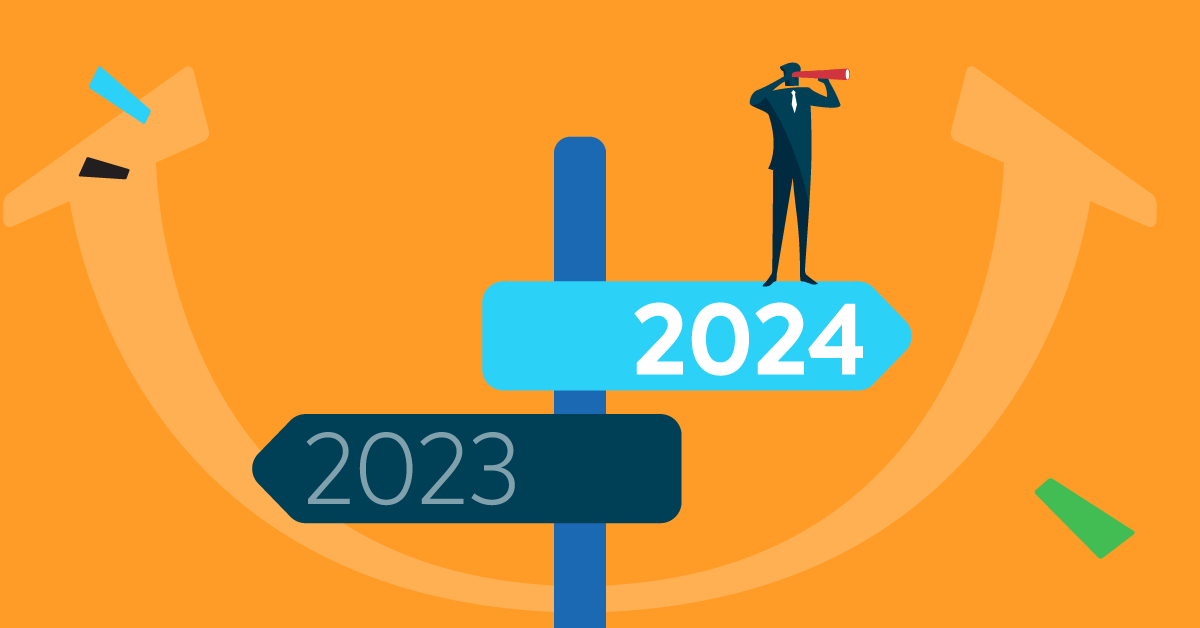If you want to thrive and grow as an organization in 2024, strategic workforce planning is not just a good idea. It’s a necessity.
You can no longer count on reacting to emerging needs or market shifts by scrambling to fill positions at the last minute. Instead, you’ll need a forward-thinking approach. One that anticipates future talent requirements helps you develop strategies to ensure you have the right people in the right jobs at the right time.
So, ditch the reactive approach and embrace the power of a strategic workforce plan for business. Your future self will thank you.
Table of contents
- What is strategic workforce planning?
- Why your company needs workforce planning
- 7 things to consider when planning for 2024
- Strategic workforce planning: Step-by-step guide
- Essential tools and processes for workforce planning
- Make a plan and stick to it (or don’t)
What is strategic workforce planning?
Strategic workforce planning means aligning your organization’s workforce with its strategic goals and objectives. It involves forecasting future workforce needs. And making plans to hire and retain the right talent.
It’s “strategic” because it’s a link between workforce planning and your company’s overall strategy.
Workforce planning is not just about filling open positions or responding to immediate needs. It’s about making decisions that will get the right people in place to achieve your long-term goals.

Why your company needs workforce planning
Think of it like planning a road trip. You wouldn’t just wing it and hope you’ll find a place to stay at every stop along the way. Instead, you’d likely research destinations, book accommodations in advance, and even map out potential detours.
Similarly, strategic workforce planning involves mapping out your organization’s talent needs in advance. It allows you to take into account factors like business growth projections, technological advancements, and demographic shifts.
Here are some of the benefits of anticipating talent needs:
- Improving organizational agility by being more responsive to changing market conditions and new opportunities.
- Reducing costs associated with reactive hiring, such as recruitment fees and training expenses.
- Increasing employee engagement and retention by showing employees you value their skills and talents.
- Enhancing organizational performance by ensuring that the right people are in the right places at the right time.
7 things to consider when planning for 2024
To plan for the future, you need to understand the trends that will define the workplace in the years to come. Here are seven things to consider as we head into 2024:
The rise of AI and automation
Artificial intelligence (AI) and automation are rapidly transforming the workplace, automating routine tasks and augmenting human capabilities. They’re also bringing concerns about job displacement and the need for upskilling. In 2024 and beyond, you’ll need to focus on developing an AI-literate workforce.
Set your teams for success in the AI-driven future
Bridge AI skills gaps with TalentLMS.
The training platform that users consistently rank #1.
New roles and skills
In 2024, we can expect to see a growing demand for roles like:
- Data scientists
- AI specialists
- Cybersecurity professionals
- Experts in human-computer interaction (HCI)
These roles will require a blend of technical expertise, critical thinking, and creative problem-solving skills.
Generational shifts in the workplace
The workplace is becoming increasingly diverse, with multiple generations working side by side. In 2024, the number of Generation Z workers will surpass Baby Boomers. You’ll need to adapt your management practices, workplace cultures, and communication strategies to effectively engage and retain this multigenerational workforce.
The rise of the gig economy
Changing technology and work preferences have led to a trend of more short-term, freelance work. Consider how to integrate gig workers into your talent strategies. This means ensuring they have the skills, training, and resources to succeed in their roles.
Emphasis on soft skills and emotional intelligence
You’ll want to invest in skills like communication, teamwork, adaptability, and problem-solving. These soft skills ensure your people can navigate a complex and changing workplace.
Prioritizing employee well-being and mental health
Employee well-being and mental health are gaining increasing attention in the workplace. In 2024, we can expect to see more organizations implementing initiatives to promote employee well-being. For instance, with flexible work arrangements, wellness programs, and mental health support.
Embracing diversity, equity, and inclusion
Diversity, equity, and inclusion (DEI) are increasingly important, both as moral imperatives and business strategies. Prioritizing DEI helps you attract, retain, and engage top talent. And a diverse and inclusive workforce also means increased innovation, creativity, and problem-solving.
Meet TalentLibrary™
A growing collection of ready-made courses that cover the soft skills
your teams need for success at work
![]()

Strategic workforce planning: Step-by-step guide
Once you know what trends to take into account, you’re ready to follow workforce planning best practices. Here are five steps to help you effectively organize and execute your strategic workforce planning:
1. Define organizational goals and objectives
Start by understanding your company’s long-term vision and strategic direction. Make sure you have a clear definition of where your company’s headed and what you want to achieve in both the short and long run.
2. Analyze your current workforce
Conduct a thorough HR workforce analysis to understand your existing talent pool. Look at headcount and skill sets to evaluate employee skills, experience, demographics, and growth potential.
Compare this analysis to your goals. Are there any personnel or skill gaps between the talent you have now and your company’s future needs? Note what you need to fill them in your strategy.
3. Forecast future talent needs
Anticipate future talent needs based on things like:
- Business growth projections
- Technological advancements
- Market trends
Be sure to consider the factors mentioned above and plan for how each will affect your organization.
4. Develop a talent acquisition strategy
Once you’ve done a thorough analysis, you can create a comprehensive talent for attracting, developing, and retaining the right talent. Break this step down into three main tasks:
- Identify target talent pools
- Develop targeted recruitment campaigns to attract them
- Plan and implement onboarding and training programs
5. Invest in employee development
Learning and development opportunities will boost employee satisfaction and retention. They ensure your team has the skills and knowledge they’ll need for future roles. They also show your employees you care about their success.
Plan to provide training opportunities, offer career development programs, and foster a culture of continuous learning.
Essential tools and processes for workforce planning
Effective workforce planning requires strategic foresight. You also need the right HR tools and processes to support informed decision-making. Here are some options to support a talent strategy for business growth:
Human resource information system (HRIS)
An HRIS is a software program that helps you automate core HR processes like time tracking, payroll, and benefits admin.
It also provides a single source for employee data, including demographics, skills, performance, and career development. Analyze your HRIS data to track headcount trends, turnover patterns, and the overall skills and experience of your team.
This will help you forecast talent needs. And also make informed decisions about talent acquisition and development strategies.
Looking for a training platform with HRIS integration?
Facilitate HR processes with TalentLMS.
The training platform that users consistently rank #1.
Skills gap analysis
Identify the specific skills and competencies you need to achieve your organization’s goals. Then, determine where you have gaps so you can prioritize training and development initiatives to close them.
You can do a skills gap analysis manually or use specialized software tools. These tools take a look at job descriptions, employee profiles, and market trends to show you what you need and where you stand.
Performance review systems
Performance review systems provide insights into employee performance, strengths, and areas for improvement. By regularly evaluating employee performance, you can:
- Identify potential knowledge gaps and training needs
- Track individual and team progress toward goals
- Make informed decisions about promotions and career development
Workforce analytics tools
Workforce analytics tools help you analyze and visualize HR data. This view provides deeper insights into workforce trends, patterns, and correlations.
They’ll identify areas of risk, like high turnover rates or potential skills shortages, and help you make long-term workforce planning decisions.
Learning management systems (LMS)
A learning management system (LMS) makes delivering and managing training programs easier. It lets you easily create and deliver online courses for continuous learning or onboarding training. It also lets you track employee participation and progress and evaluate the effectiveness of training programs.
Employee engagement and feedback
Regularly gather information to help you identify the strengths and weaknesses of your strategy.
Use surveys, focus groups, and one-on-one conversations to get valuable insights on things like employee satisfaction, morale, and career aspirations.
This will show you places where you can improve training and development programs. Or ways to create a more supportive and engaging work environment.
Make a plan and stick to it (or don’t)
Strategic workforce planning is an ongoing process that requires continuous monitoring and adaptation.
Regularly evaluate and adjust your plans as needed to address changing circumstances and trends. Even if it means re-starting a process, admitting your predictions were not accurate, or re-allocating your budget.
Being prepared and staying flexible will help you create a future-ready workforce. One that’s ready to drive innovation, growth, and success in the years to come.
| Tags: Employee Training,HR,L&D and employee retention,learning and development,Trends




Leave a Reply